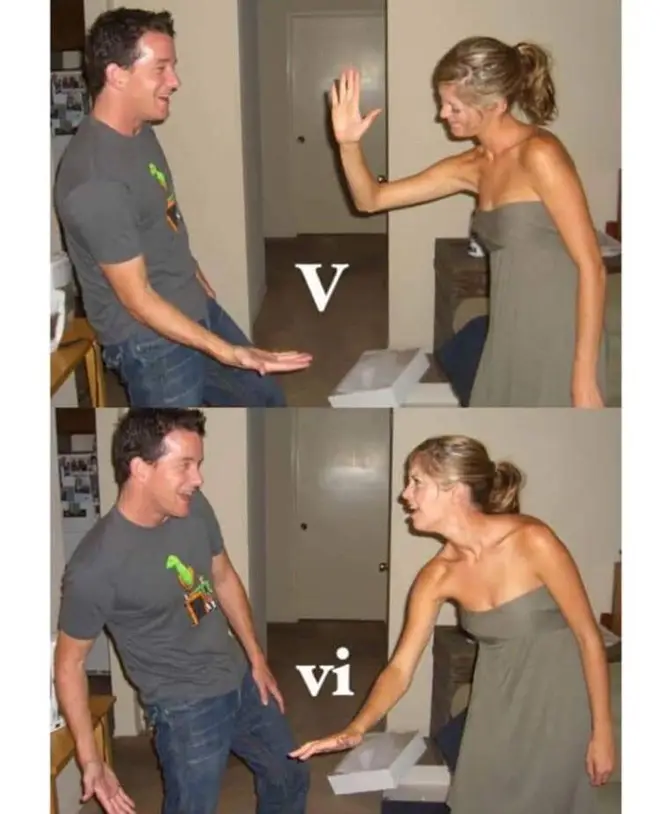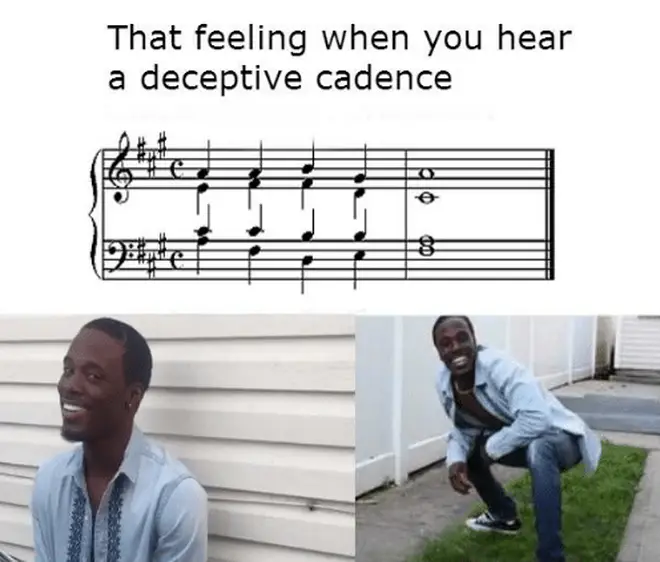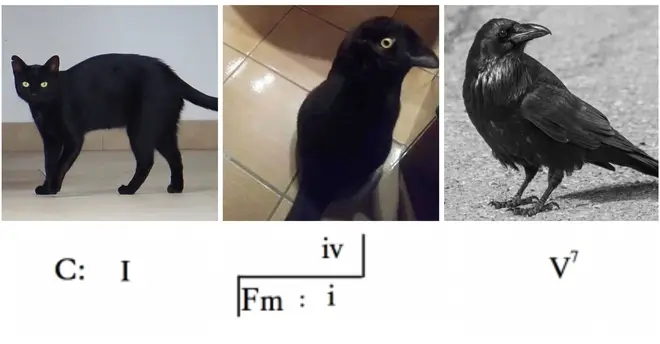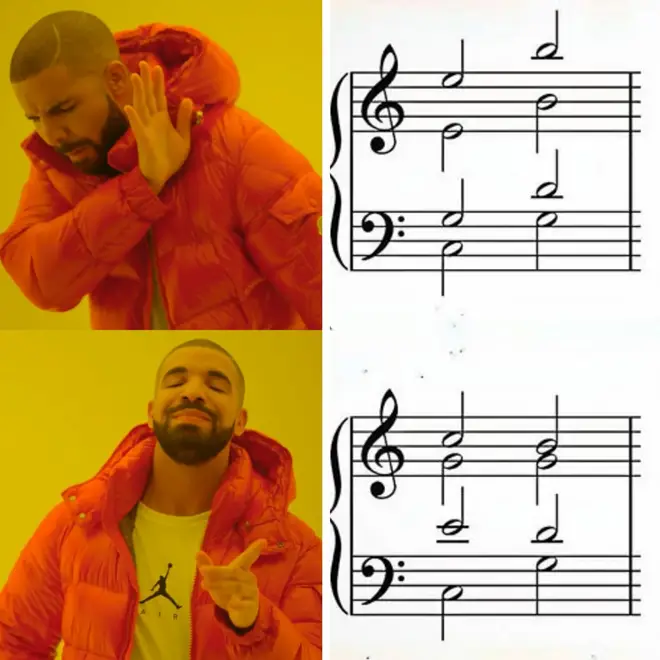On Air Now
Early Breakfast with Lucy Coward 4am - 6:30am
14 November 2019, 19:06 | Updated: 14 November 2019, 20:01
Tired of those boring lectures and dusty text books? Allow us to present a music theory lesson for the modern age, presented entirely through memes.
Triplets are three equal notes that fit inside another note rhythm. Most commonly, you’ll find a triplet over two or four note values. Here’s one we made earlier, illustrated with lego:
Here’s a nice example from Music Meme Theory 101. A repeat sign means ‘head back’.
A deceptive cadence is two chords that take you in an unexpected direction. A 5th chord feels it should resolve to 1 (the home chord).
But a deceptive cadence plays with your ears and rather than resolving, it takes you to an unexpected chord, like the 6th or 2nd. Here are three meme-y illustrations:


A modulation is when the music moves from one tonal centre to another. There are many ways to do this, but one of the most frequently used is common chord modulation.
Here, you move between keys pivoting around a chord common to both old and new tonalities. We begin in the key of C major but move to F major via a chord that exists in both keys. Rather like the cat that becomes a crow, via a cat that also looks like a crow.
Essentially, common chord modulations be like:

Learn your B minor key signature while laughing at your dad’s terrible joke.
Five whole-tone steps on a scale gets you an augmented 6.

Four-part writing is the staple of any harmony and counterpoint class. For centuries students have been taught the principles of good part writing – and one of the big no-nos is consecutive or parallel fifths. These are progressions in which the interval of a perfect fifth is followed by a different perfect fifth between the same two musical parts.
Many say harmonic rules like this are to be broken (one can even spot parallel fifths in the chorales of Bach), but remember this is a theory lesson and you should pay attention to what your teacher (Drake) says.
